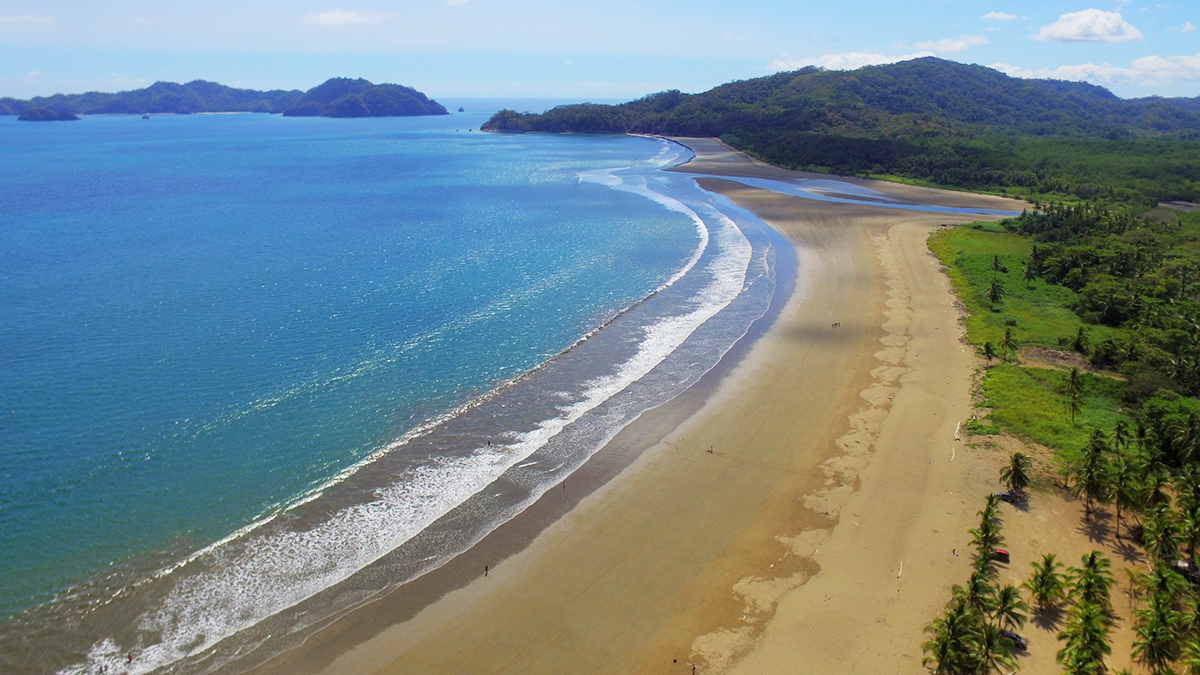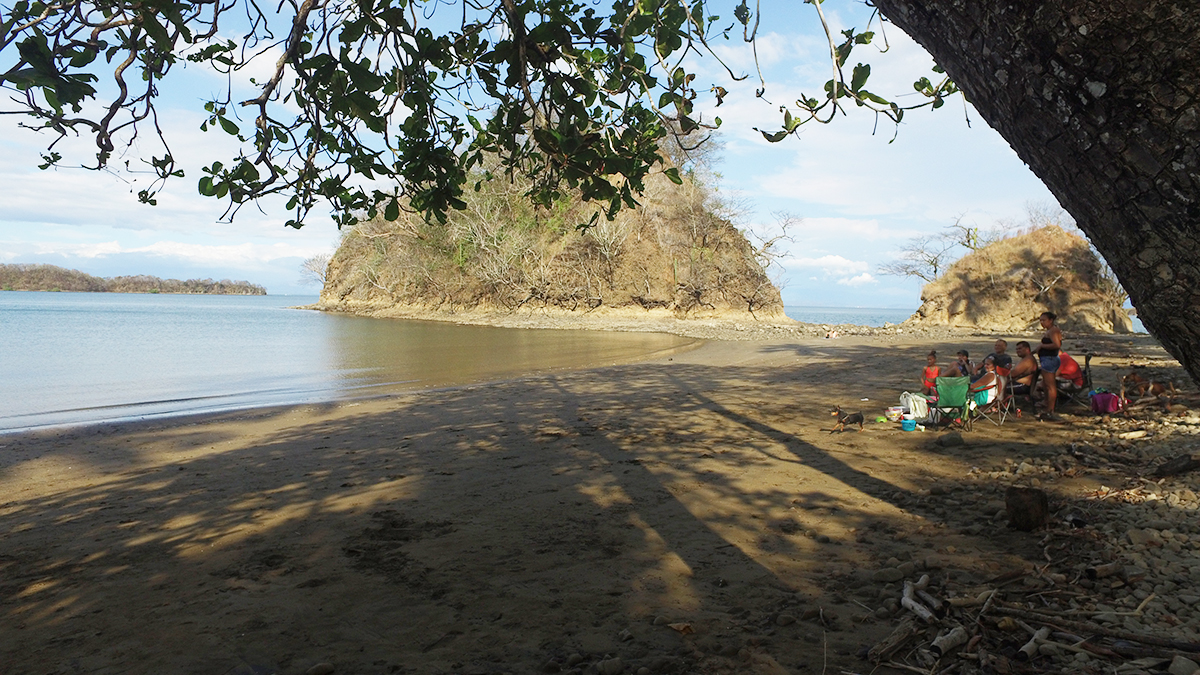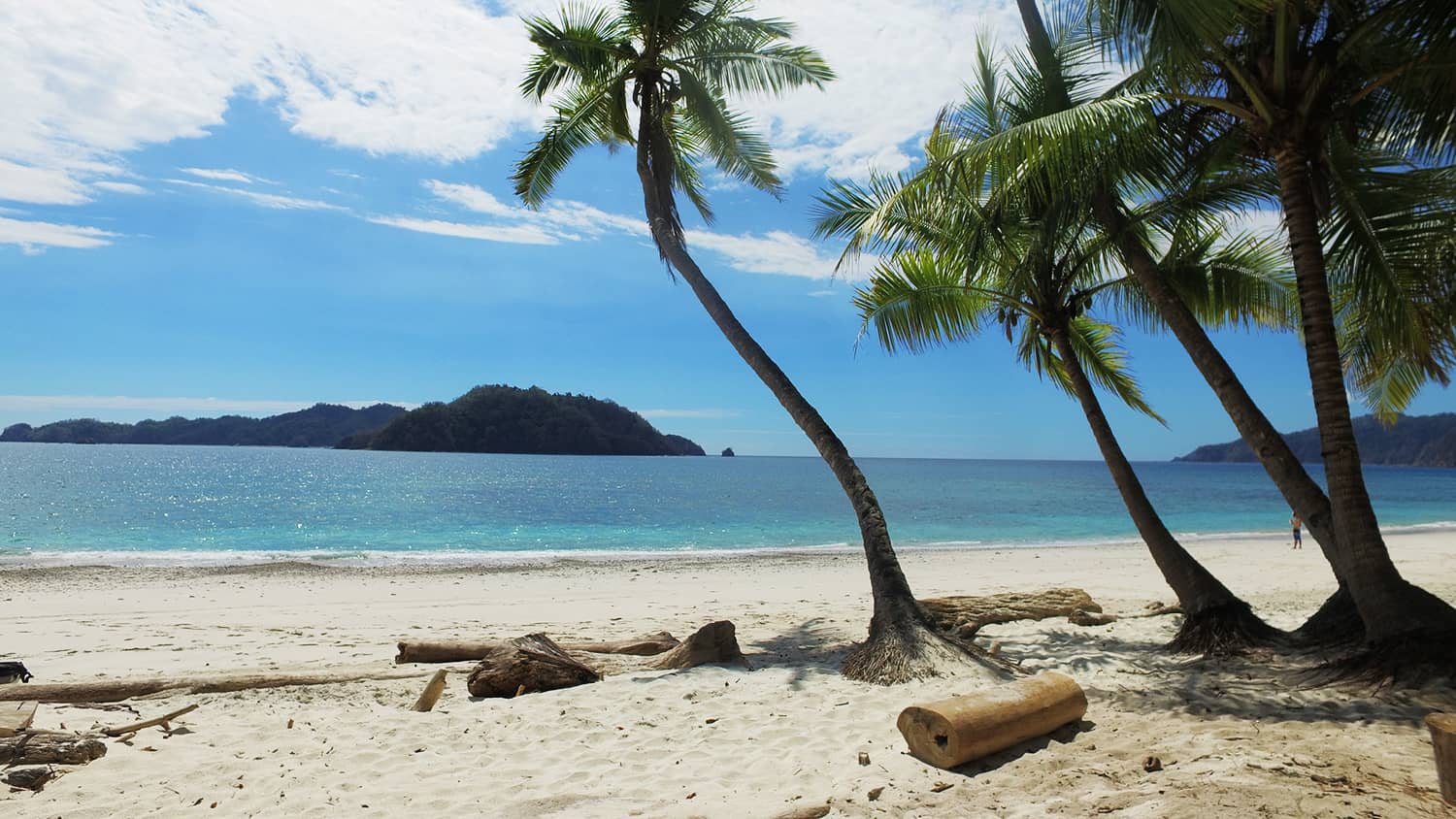This whole tour was born out of a desire to visit a special beach. I’ve heard about Quesera because it hosts a fascinating and peculiar tour: the bioluminescence tour.
Our journey began very early in the morning. At 3:30 a.m., I drove to Puntarenas to take the 5 o’clock ferry. Bad news: It was already packed. So I had to turn back and go around Nicoya Peninsula on a trip I enjoyed like few others.
Sometimes the best-planned trips end up in unusual events and surprises that then inspire thinking. Bottom line: How is that possible that I’m Tico, and I spent 29 years of my life without doing a beach tour around the Peninsula?
I am not saying that I’ve wasted my time. I have visited Santa Teresa and all its hidden beaches; also Montezuma and the typical ones: Tambor, Pochote …
But that Cabo Blanco nature reserve you see on the map of Costa Rica hides unknown landscapes, remote but impressive beaches that can be reached by car, but also by boat and sometimes you have to get into the kayak.
Don’t worry, at GOPlaya we show you all the directions on Google Maps and Waze so you can reach the best spot and have no excuse to go for a walk.
GOPlaya wrote this blog to recommend the best virgin beaches on the Nicoya Peninsula.
Quesera: This whole tour was born out of a desire to visit a special beach. I’ve heard about Quesera before because it hosts a fascinating and peculiar tour: the bioluminescence tour.
I had been told that at night the beach lights up; that by throwing oneself into the sea and moving one’s arms, the plankton was activated, which allowed one to see small lights underwater. It’s true. It’s incredible, and I recommend it.

But I would go to Quesera a thousand times even if the phenomenon didn’t exist. It’s a charming destination with everything a beach lover seeks: white sand, a crystalline and turquoise sea like the movies.
Palm trees embrace the coast and to one side there is a viewpoint from which you can see all the Tortuga Islands. You can arrive by boat, but if you prefer to complement your adventure with a wild environment, I recommend that you walk the trail that leads to the beach and enjoy the wildlife (raccoons, deer, etc).
Posa Colorada: Before taking the boat, I had already talked to Don Luis, the owner of the Refuge, about a small hidden spot I found in an old book, which my dad keeps at home. I only knew its name, Posa Colorada beach.
The truth is that you couldn’t even see it in the distance because it is tiny. But it was right next to Quesera, and I wanted to visit it.
There were also few references on the web. Previously, there was overland access to Posa Colorada, but then it was closed due to the rains and natural phenomena that began to cover the trail too often.
I asked Don Luis to take me in his boat and he agreed, but not before he explained that the usual way to visit this beach is by kayak, in a journey of almost 15 minutes. (There are really calm waves, so it is ok).

Just like Quesera, Posa Colorada beach expresses itself from afar with an intense turquoise that is worthy of the best beaches in the world. You can’t leave here without diving into the water and snorkeling. It’s totally worth it.
Muertos: Due to fate, there was a moment during the tour when we had a break of a few hours left before taking the boat to Quesera.
A good friend of mine, Felipe, once told me about Muertos beach, and the truth is that I was was very curious about it. I knew the area but not that spot. Imagine my frustration when I passed by it three times and never saw it. Either I was distracted or the beach doesn’t exist.
Fortunately it does. But I have to admit that it wasn’t easy to find.
First I had to get to Pochote to see if anyone could guide me. A lady who rents kayaks explained to me that there were different ways to get to know this destination, which is usually visited by yacht tour operators.
Option one is the most logical option, by boat. The second alternative was also viable, as it was only necessary to cross the Pochote estuary by kayak for 20 minutes. If I chose this option, I had to wait for the tide to come in.
The third alternative is the most complicated, especially when loading a drone and a bag with a computer inside. But hey, it’s ok.
I drove around the Pochote mangrove swamp in a 15-minute drive. You got to drive until the end of the road, then start walking. When the tide is low, you can see thousands of stones that make up the route.

If the tide comes in, you won’t get through. I got lucky and started jumping from stone to stone, being careful not to fall or slip, until I arrived at the beach.
It is a beautiful spot, surrounded by high palm trees and a clean and calm beach, with a barely noticeable swell.
There is a gallery forest on the shore that releases small leaves that fall on the sand and a crystalline sea, perfect for feeling the fresh water with your feet.
Organos: The next day, we had to pick up the pace. We still had beaches to visit and the ferry threatened to escape again. So I left early to go to a totally different beach compared to Quesera and Posa Colorada. Very, very different.
But you and I both know very well that beauty is relative and two destinations can be very different, but both stunning.
That’s how I arrived to Organos beach, after walking a ballast street and overcoming some gaps (roads in bad shape are part of the adventure).
It’s a huge beach. Camping tents are very popular here a few meters from the coast. Also, you will see couples who take their time to walk it from one side to the other.

They walk and walk and find it hard to get back, perhaps because the beach seems endless, especially when the wave bursts on their feet and the salt water splashes on their faces.
It’s that feeling of being there, not feeling the need to go anywhere else. It’s as if this beach of gray sand and mid-sized swell were welcoming you.
Mangos: I couldn’t leave Nicoya Peninsula without visiting the spot where a good friend, Karol, grew up. The day I met her and showed her GOPlaya the first thing she asked me was: “Got Mangos beach on there yet?”
I was never told about this spot until I met Karol. She told me that as a child she often spent time here with her mom. They played and enjoyed on a very quiet beach. Indeed, it is really quiet.
There are no waves in Mangos. It is like a natural swimming pool that is frequently visited by locals.
A huge rock divides the beach in two and unlike the other destinations, the tone of the water is almost green and the sand is light brown. Very clean.

There is parking space and dozens of trees that refresh the environment.
What Karol didn’t tell me was that the street is a little damaged. It is that mixture of loose stone and ballast that sometimes becomes a headache for cars that are not 4×4 — like mine.
My traveling pal, Carlos, is a better driver than me and he ended up instructing me. “Gain momentum. Be constant, mae. Don’t accelerate too much,” he said.
And after a couple of scolds and some sweat on my forehead, I got away with it.
I got to the ferry on time, the last one of the day. Five beautiful, unspoiled beaches. A trip hard to forget. I hope you dare to conquer the hidden side of the Nicoya Peninsula.
Questions and answers for your trip:
How do I get to each beach without getting lost?
Very simple. Use Google Maps and Waze so you can get directly to the spot you want. In the following links you will find the address of each of the beaches:
Do I need a boat to get to Quesera?
It’s an option. Upon arrival at Curú Wildlife Refuge, you will be offered a boat tour to the beach. The journey takes between 10 and 15 minutes. Tours cost between $15 and $35 per person, depending on the package.
You can pay to see the beach, but also for a snorkeling tour to Tortuga Islands. There is also a kayak rental service; it can take about half an hour to get to Quesera and 15 minutes to get to Posa Colorada. You can also hike through a trail to Quesera, is about two hours walk to visit this spot.
Is it necessary to have a 4×4 to do this ride?
You need a 4×4 to visit Mangos beach, because the road is somewhat damaged. If you travel these destinations in the summer, you shouldn’t have any problem.
Are there lodging and restaurants available in the area?
Yes, there are cabins and rental houses in Paquera, as well as restaurants and sodas. In Curú Refuge there is a restaurant too. If you want to extend your stay, you can travel to Montezuma, which is just over an hour drive away on a well-maintained road. Click here to find hotels near these beaches.
This story was sponsored by GOPlaya and was originally posted on their blog. To sponsor your website or event, contact the Tico Times






